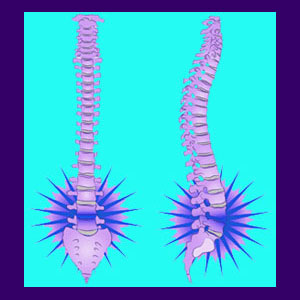
Intradiscal electrothermal therapy, also known as IDET, is a minimally invasive surgical option for the treatment of symptomatic herniated discs. The procedure has gained widespread acceptance in the medical community as a great alternative procedure to traditional spinal surgery for the correction of contained disc herniations.
It is important that the outer disc wall remains intact, in order for the best treatment results to be achieved. This procedure is not recommended for ruptured discs. This minor operation is also sometimes called intradiscal electrothermal annuloplasty (IDEA). Some specialists also use the technique to treat tiny nerve tissues which are theorized to invade the disc through small annular tears or even to seal the annular tears themselves.
This essay explores the use of this effective minimally invasive therapy for particular types of intervertebral pathologies that cause back and neck pain.
Intradiscal Electrothermal Therapy Benefits
IDET gives the patient a good chance to correct unresolved disc pain without undergoing the trauma and risks associated with full open or more invasive spinal surgeries, such as discectomy.
Patients can have this procedure performed as an outpatient and fully recover in a matter of weeks. The surgery is relatively common and is performed by many different types of doctors. There are also many variations on the procedure which can offer patients truly customized treatment results for a plethora of different diagnosed disc conditions.
Some patients have found permanent back pain relief from this operation, either through successful physical resolution or strong surgical placebo effect. The technique is simple and still allows for more drastic follow-up surgeries, if required.
Therefore, when their disc condition is indicated for treatment, the patient really has nothing to lose by trying IDET before acquiescing to a more involved surgery like laminectomy or spinal fusion.
Intradiscal Electrothermal Annuloplasty Drawbacks
IDET is not as advanced as the nucleoplasty procedure, but is performed more often. Eventually, look for updated versions of both operations to become some the most common treatments for contained herniated disc injuries.
The procedure shows good short term statistics, but many patients experience a relapse in symptoms within a year of having the operation. This may occur due to a misdiagnosis of the disc as the true causative issue. Any treatment, including back surgery, can fail if it is directed at an incorrectly identified causation. Remember that most herniated discs are statistically unlikely to be related to the incidence of chronic pain. However, poor or temporary treatment results may also occur due to the very common incidence of re-herniation after any type of corrective disc operation.
Intradiscal Electrothermal Therapy Results
If you are thinking about undergoing a surgical procedure for a disc problem, I highly recommend making sure that the diagnosed condition is the actual cause of the pain. The most common reason for surgical failure is misdiagnosis and no patient is immune to this epidemic phenomenon.
Once you decide that surgery is right for you, try to utilize the least invasive procedure first. You can always move on to a full surgical endeavor if more conservative procedures fail. IDET is a good example of a minimally invasive back surgery procedure which might just become the cure you are looking for.
My last piece of advice is to find a doctor who will listen to you and make sure this is the right treatment for your particular condition. Never rush into surgery or allow a doctor to pressure or frighten you into compliance with a surgical prescription. Spinal surgery is a big deal and the idea should be considered very carefully before any final decision is made. Sure, IDET is a minor operative technique, but it still demonstrates risks and should never be undertaken casually.
Back Pain > Back Surgery > Intradiscal Electrothermal Therapy




